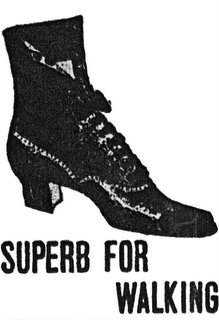At one block, plus one and a half blocks (punctuated by the Transamerica Pyramid) you’d think Merchant Street was already short enough. But no. The part that starts at the redwood grove on the east side of the pyramid has to share its generic mercantile name with the way-funnier Mark Twain. (Map)
Why Mark Twain?
The story goes back to the steam baths that used to be in the basement of the Montgomery (Monkey) Block. The Monkey office block filled the space between Montgomery St and Sansome, and Washington and Clay, was built in 1853, just as San Francisco recovered from the gold rush. The structure survived the fires of the 1850s, and those of 1906 (the interior burned in 1906 but the building itself was reusable). In fact, the Monkey Block survived until the 1959, when a developer tore it down and put in a parking lot. (We were into modern then.) A few years later, Transamerica replaced the parking lot.
So what does Mark Twain have to do with steam baths and the Monkey Block? The story goes like this: a young Mark Twain met a fireman one day while the 2 were sitting steaming in the basement baths. The fireman’s name was Tom Sawyer. No one knows/cares what became of the fireman but we all know what became of the name.
And, while we’re at it, here’s another Monkey Block story… An Italian restaurant there, Coppa’s, had at first catered to the upscale businessmen who worked in the upscale offices in The Block; then as Block got older, and the upscale offices moved out and more and more bohemians/artists/writers moved in, Papa Coppa increasingly fed the artistic crowd—fed them well when they had just made a sale, fed them anyway when they were between commissions/sales. In return for Papa C’s generosity, artists painted a mural on first one wall, then all the walls of the dining room. Apparently quite something—filled with visual gossip and risqué portraits—so much something that it became a tourist draw and kept the Coppa’s tables full. Then the earth shook and fire swept through. After the fire, soldiers enforced a dusk-to-dawn ban on inside fires (stoves, fireplaces, even candles were banned). Soldiers also patrolled to keep looters from looting downtown banks and businesses.… But a few soldiers couldn’t keep a few determined writers from their old haunt. When they snuck in one night (and brought their own wine and comestibles, which perhaps they shared with the guards), they had themselves a candlelit celebration. They celebrated having survived, and that their friends survived. They also celebrated the ashes of manuscripts that had been sent out for publication repeatedly and met with rejection just as repeatedly—they were now free from the old burdens and could move on. Or so the story goes.
Subscribe to:
Post Comments (Atom)

No comments:
Post a Comment